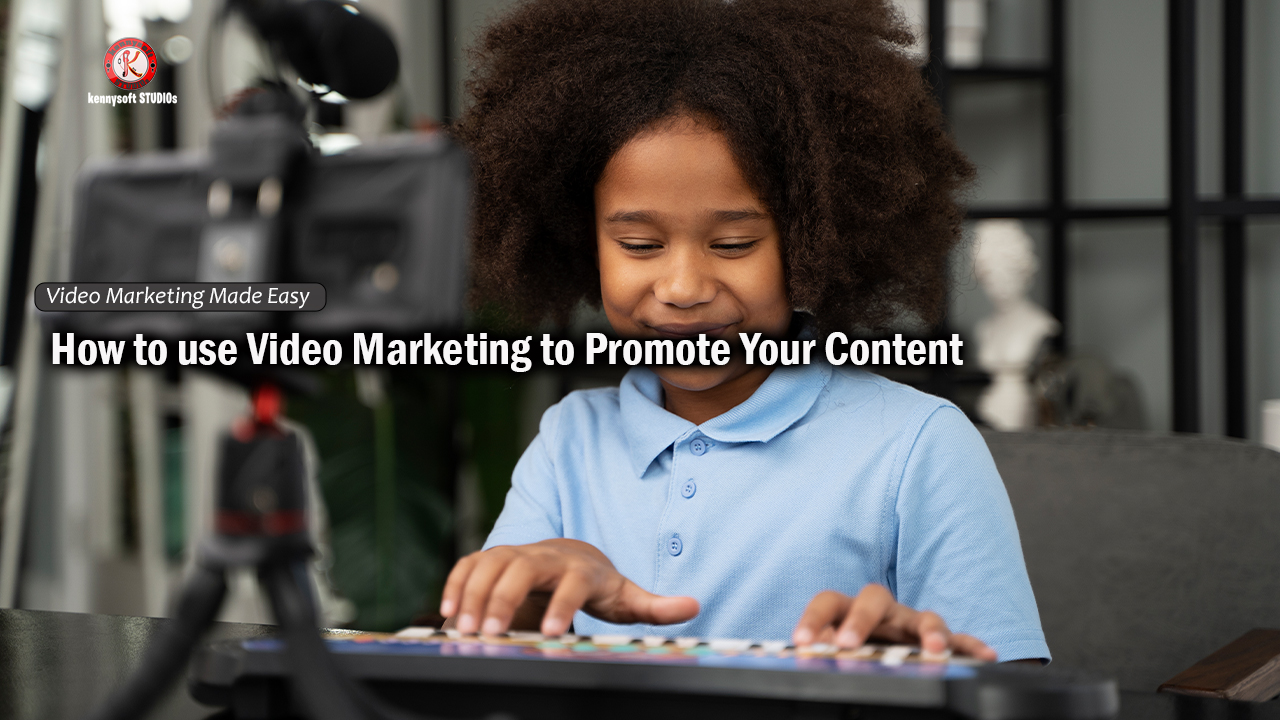In the current digital era, video has become a powerful tool for content promotion. With its ability to engage audiences quickly and effectively, video marketing can significantly boost your content’s visibility and impact. Here’s how to leverage video marketing to amplify your content:
How to use video marketing to advance your content.
1. Create Video Summaries of Long-Form Content
Transform your blog posts, whitepapers, or e-books into concise video summaries by using animations or graphics to illustrate complex ideas, highlight key points in an engaging visual format and Keep videos short (1-2 minutes) to maintain viewer interest.
2. Optimize for Different Platforms
Different social media platforms have varying video formats and audience behaviours. Tailor your video content to each platform’s specifications and audience preferences. For instance, Instagram and TikTok thrive on short, visually appealing videos, while YouTube allows for longer, more in-depth content. Adapting your videos to suit these platforms ensures maximum reach and engagement.
3. Leverage Social Media Stories
Use ephemeral content to promote your latest pieces:
- Create short, engaging clips for Instagram or Facebook Stories
- Use platform-specific features like polls or questions to drive engagement
- Include swipe-up links (where available) to direct viewers to your full content
4. Develop Behind-the-Scenes Content
Show the process behind your content creation by giving viewers a peek into your research or writing process, introduce team members involved in content creation and build a personal connection with your audience
5. Optimize Videos for Search Engines
Ensure your promotional videos are discoverable. Use relevant keywords in video titles, descriptions, and tags. Create custom thumbnails that accurately represent your content and include transcripts to improve SEO and accessibility
6. Leverage Live Video
Use live streaming to promote your content in real-time. Firstly, you can host Q&A sessions about your latest blog post or article, conduct live interviews with industry experts featured in your content and give live demonstrations related to your written tutorials
7. Repurpose Content into Video Series
Transform comprehensive guides or lengthy articles into a series of short videos. Break down complex topics into digestible video segments. Create a playlist that guides viewers through the entire topic and use each video as a promotional tool for the full content piece
8. Implement Video Testimonials
Showcase real people discussing your content:
- Feature industry experts commenting on your latest research
- Include user-generated content from readers or viewers
- Use these testimonials to build credibility and interest
9. Utilize Paid Advertising
Paid advertising can boost the visibility of your video content across various platforms. Platforms like Facebook, Instagram, YouTube, and LinkedIn offer robust targeting options to reach specific demographics and interests. Allocate a portion of your marketing budget to promote high-performing videos to expand your audience and drive conversions.
10. Create Animated Infographics
Transform static infographics into engaging animated videos:
- Bring data and statistics to life through motion graphics
- Break down complex information into easily digestible visual content
- Use these videos to drive traffic to more detailed written content
Implementation Tips:
- Maintain Consistent Branding: Ensure your videos align with your overall brand identity
- Focus on Quality
- Keep It Concise: Respect your audience’s time by delivering your message efficiently.
- Include Clear CTAs: Guide viewers on what to do next (e.g., “Read the full article”).
- Analyse Performance: Use analytics to understand what works and refine your strategy.
- Engage with Your Audience: Respond to comments and encourage discussions around your video content.
In Conclusion
By incorporating these video marketing strategies, you can significantly enhance the promotion of your content. Video adds a dynamic, engaging element to your marketing mix, helping to capture attention in a crowded digital space and drive more traffic to your core content.
Remember, the key is to create video content that adds value, complements your written material, and encourages viewers to delve deeper into your full content offerings. Embrace the creativity and possibilities that video marketing offers to connect with your audience authentically and stand out in the crowded online marketplace.
